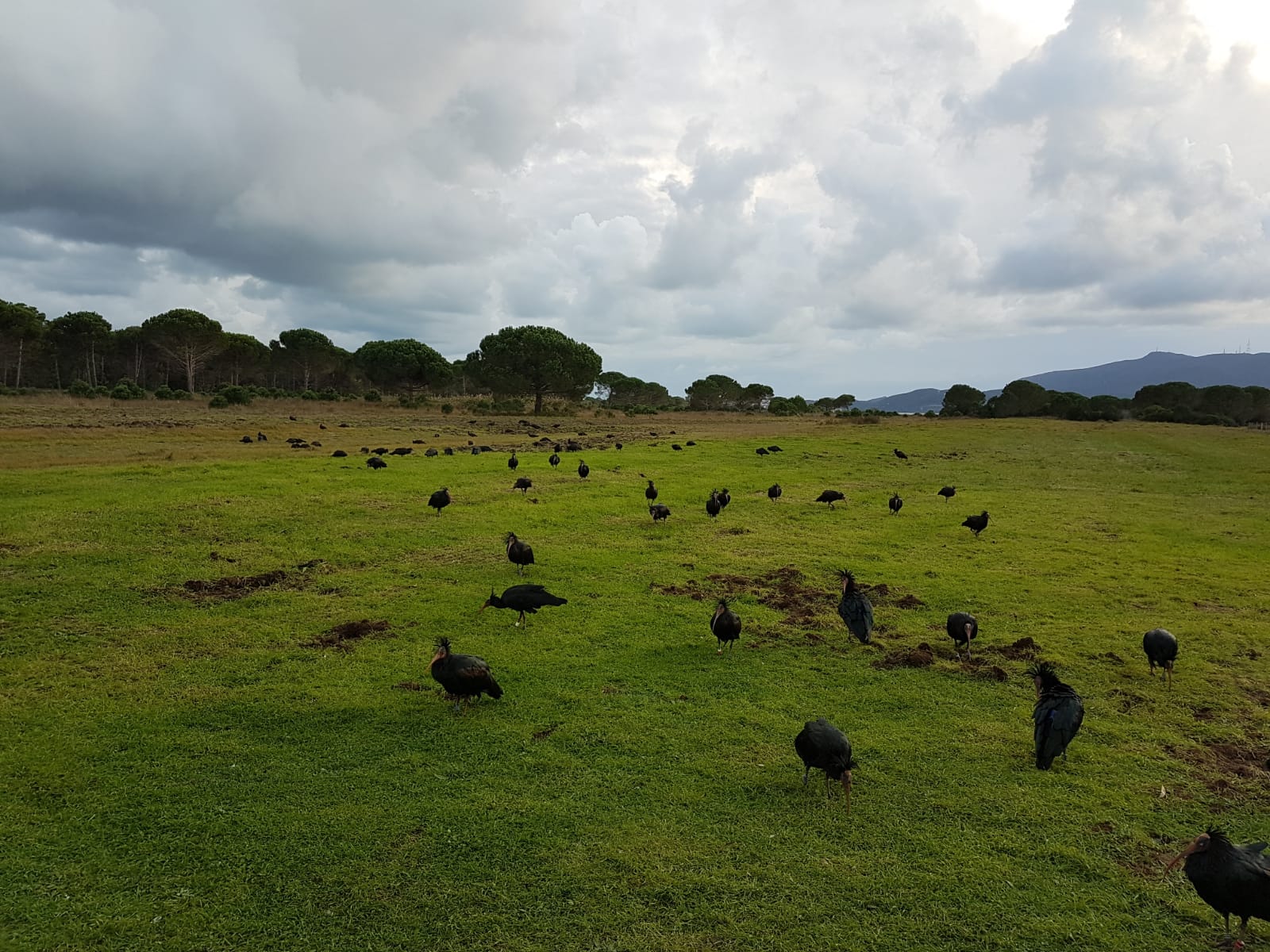Exciting conclusion of the autumn migration
Newsletter 14/12/2020
The autumn migration for the breeding colonies north of the Alps is concluded. Approximately 120 birds are in the Tuscan wintering area at the WWF Oasi Laguna di Orbetello, while further 40 birds are spread over the area between Tuscany and the southern edge of the Alps. We expect more birds to reach the common wintering site, although an increasing number of birds spend their winter further north. This progressive shortening of the migration distance occurring in parts of the population is a phenomenon also known in other species, most probably driven by global warming due to climate change.
Another consequence of global warming also became evident again this year. About 20 birds from the colonies Burghausen and Kuchl stayed north of the Alps until December. We had a similar situation in 2014, where we lost a significant proportion of birds. As a consistent onset of winter was predicted for the last week, we decided to catch the remaining birds in the Inn valley and south of the city of Salzburg. The adults were released in Bolzano. They know the migration route and will continue migrating further south. The unexperienced juveniles were transferred directly to the Tuscan wintering site.
Due to the rapidly changing environmental conditions, such events will probably occur again in the upcoming years. As indicated by simulations, the ever-larger population will not be endangered by such events and we therefore decided to scale back such emergency measures in the future. For now, these measures are still feasible and as we believe also justified.
This year we could not do a human-led migration this year to release further juveniles, nevertheless the population increased from 142 individuals end of 2019 to about 160 individuals end of this year. This is mainly due to 27 fledged juveniles in Burghausen and Kuchl and the integration of further 39 juveniles from the breeding colony in Rosegg, Carinthia, into the wild population (as reported earlier this year). The population now consists of four breeding colonies, Burghausen in Bavaria and Kuchl in Salzburg (about 80 birds), Überlingen in Baden-Württemberg (about 40 birds) and Rosegg in Carinthia (about 40 birds).
In addition, one juvenile from the Konrad-Lorenz Research station in Upper Austria and three juveniles from Fagagna, Friuli-Venezia Giulia province, both free-flying sedentary colonies, joined the Tuscan wintering flock. This is an exciting development! In the upcoming years we will have to deal with a steadily growing number of such interactions, and we assume that the rewilded European population will ultimately benefit from it.

Picture:
About 160 Northern Bald Ibises gathered in the wintering area, originating from four breeding colonies, as well as two free-flying sedentary colonies Konrad-Lorenz Research station and Fagagna. Photo: D. Trobe




